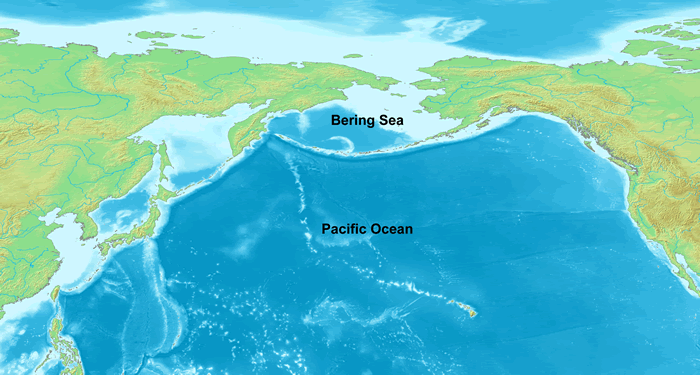The First Mapmaker: Anaximander’s Vision of the Earth
Mapping the world has a rich and fascinating history, one that has evolved from simple representations of geographical features to the highly detailed and accurate maps we use today. When it comes to the creation of world maps, one of the earliest figures to play a pivotal role was Anaximander of Miletus, a Greek philosopher, astronomer, and geographer. He is often credited as the first to have conceptualized and drawn a map of the world in a way that was grounded in scientific thought. Let’s take a deep dive into who Anaximander was, his contributions to cartography, and the evolution of world maps.
Anaximander: The First Known Mapmaker
Who Was Anaximander?
Anaximander lived in the 6th century BCE (circa 610–546 BCE) and was a pre-Socratic philosopher who is primarily known for his work in cosmology, geography, and mathematics. He was a student of Thales, another Greek philosopher, and was one of the earliest thinkers to propose a model of the cosmos that departed from mythological explanations, leaning toward a more rational, observational approach.
Anaximander’s work in geography is significant because he sought to understand the world not only through philosophy and mathematics but also through empirical observation and measurement. His map of the world was among the first to attempt to represent the Earth as a spherical object rather than a flat surface.
Anaximander’s World Map
Anaximander’s map was not a detailed, modern representation of the world, as we would expect today. His world map was quite rudimentary, and there is no surviving copy of it. However, historical accounts and writings suggest that his map likely portrayed the Earth as a cylindrical shape, with a central landmass surrounded by oceans.
In Anaximander’s cosmology, the Earth was considered a floating, cylindrical object in space. The map was conceptualized within the framework of the universe’s order, which Anaximander described in his writings, such as the On the Nature of Things. This map was a significant departure from earlier, mythical representations of the Earth, as it was based on logical and observational reasoning.
The Influence of Anaximander’s Map on Later Cartography
Early Cartography Before Anaximander
Before Anaximander, ancient cultures had rudimentary forms of maps. These early maps were often localized, depicting regions such as cities, trade routes, or particular territories. The ancient Egyptians, Babylonians, and Sumerians all made maps, but these focused on smaller scales, like the representation of agricultural land or city-states. Maps of the world as a whole did not yet exist in the way we understand them today.
Anaximander’s Legacy
Anaximander’s conceptualization of the Earth’s shape and his attempt to draw the world as a whole set the stage for future mapmakers and thinkers. His work influenced later Greek scholars, including Hecataeus of Miletus and Eratosthenes, who refined and expanded upon the concept of global geography. Hecataeus, who came after Anaximander, is known to have drawn a more detailed map of the known world, though it was still relatively limited to the Mediterranean region.
Eratosthenes, in the 3rd century BCE, is famous for calculating the Earth’s circumference and creating one of the first truly scientific maps of the world, integrating measurements and data to produce a more accurate representation. He was able to determine the Earth’s size, based on the angle of the sun’s rays at different locations, and his maps formed a foundation for later explorers and cartographers.
Further Developments in World Mapping
The Influence of Ancient Civilizations
After Anaximander, ancient civilizations such as the Greeks, Romans, and Egyptians continued to develop their cartographic skills. The Greeks, in particular, sought to refine their understanding of the Earth’s shape, size, and geography, while the Romans applied these ideas in their extensive network of roads and territories.
Ptolemy, a Greek-Egyptian scholar from the 2nd century CE, is one of the most well-known figures in the history of cartography. His work, Geographia, which contained detailed maps based on his calculations, significantly influenced mapmaking for centuries to come.
The Renaissance and Modern Cartography
The development of cartography accelerated during the Renaissance with explorers such as Christopher Columbus, Vasco da Gama, and Ferdinand Magellan, who expanded the known world through their voyages. During this period, the scientific method and technological advancements like the printing press and more precise tools like the compass and astrolabe helped revolutionize mapmaking.
By the 16th and 17th centuries, maps became more accurate and detailed, moving from representations based on theoretical knowledge to actual depictions based on exploration and surveying. The development of the globe itself, as opposed to flat maps, also began during this period.
Final Thoughts
Anaximander’s map of the world marked a significant step in the evolution of cartography. While it was based more on philosophical reasoning than empirical evidence, it laid the groundwork for future generations of scholars and mapmakers. His work challenged mythological depictions of the world and encouraged a more scientific approach to understanding the Earth’s shape and geography.
Though we cannot fully recreate Anaximander’s map today, his intellectual curiosity and innovative thinking were pivotal in the long history of world mapping. The legacy of his work continues to influence modern cartography, as maps have continued to evolve with greater accuracy, detail, and technology.




